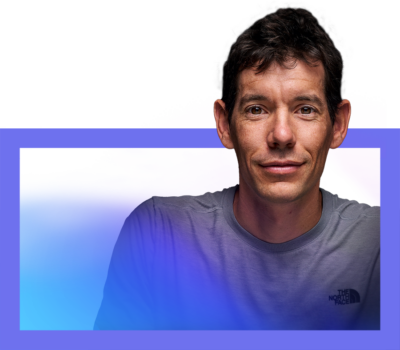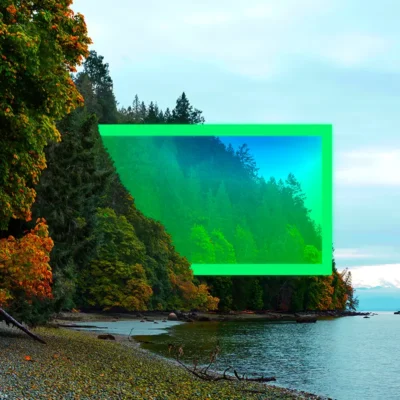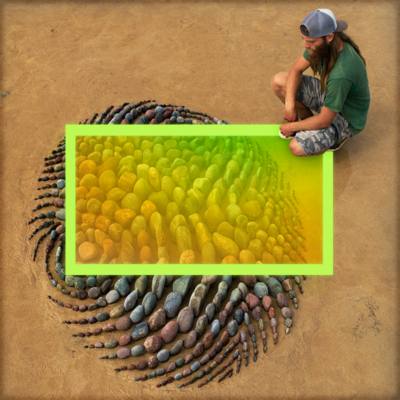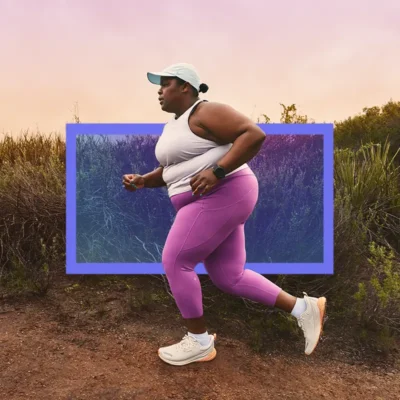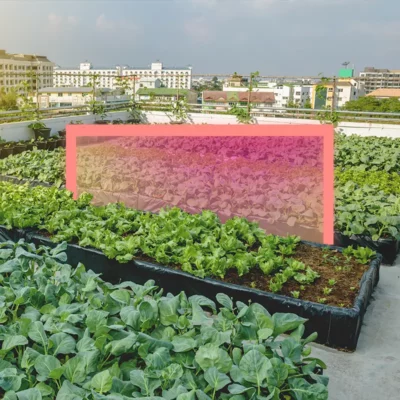To do hard things, be adaptable
Alex Honnold, renowned rock climber and the subject of the documentary Free Solo, has always known how to do hard things. Yet he’s also had to learn that his drive to push himself will only take him so far. In today’s episode, he tells the story of how he’s come to understand the importance of reading the conditions of the environment, and learning to adapt.
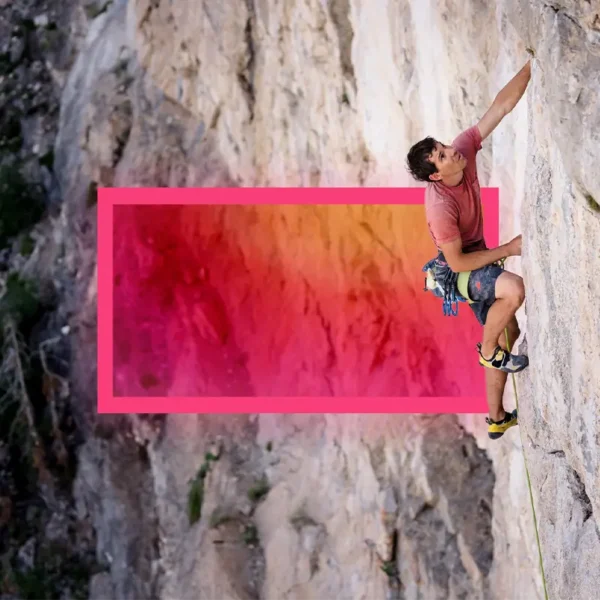
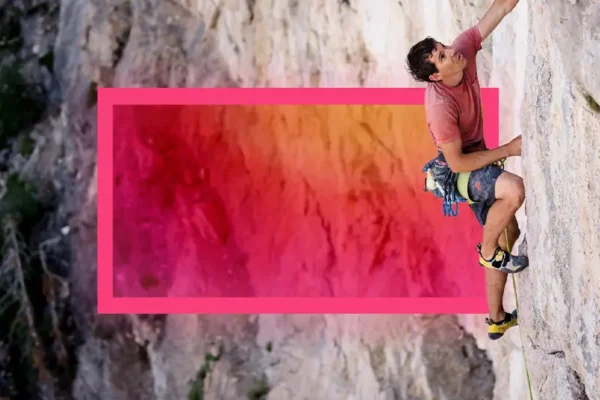
Table of Contents:
Transcript:
To do hard things, be adaptable
ROHAN GUNATILLAKE: Alex Honnold is one of the most celebrated rock climbers in the world, known for being the only person to summit El Capitan in a free solo ascent—that is, without any ropes. Undoubtedly, Alex knows how to do hard things. Yet he’s also had to learn that his drive to push himself will only take him so far. In today’s episode, Alex tells the story of how he’s come to understand the importance of reading the conditions of the environment, and learning to adapt.
The body relaxed. The body breathing. Your senses open, your mind open, meeting the world.
ALEX HONNOLD: I open my eyes and look around my backpacking tent. The flaps of the tent have frosted overnight, like someone’s sprinkled climbing chalk from above. I’m wrapped up in my dad’s old sleeping bag. It’s like a cocoon. Warm. Cozy. Only my face is exposed. And my face is freezing. I watch each breath condense instantly into frost.
The tent I’m using is meant for spring, summer, and fall. It’s January. I think about starting my day, and I feel dread. I don’t want to unzip the sleeping bag and go out into the cold. But that’s the only way to start my day of climbing. And that’s what I came here to do.
I’m 20 years old, and I recently dropped out of college—a year after my dad died. I opted out of school so I could be fully committed to climbing. This is my chance to do the thing I’ve read about my whole life, like my hero: alpinist and climber Dean Potter. It feels like I’m on a grand adventure. But I don’t think of this as a vacation. If I’m not in classes anymore, and if I have no other plans, I better be climbing every day. I’m dedicating myself to doing cool things, so I better go out and do them.
I rip the sleeping bag open and reach for my water bottle. A tiny trickle of water comes out, but it’s mostly frozen solid. I rifle through my backpack for a blueberry muffin, but it’s mostly frozen too. I bite at its thawed edge while putting on my shoes.
I go into autopilot to get myself ready for today’s climb. There’s no point in delaying. I can be uncomfortable now, or I can regret delaying later. There’s a cost either way. I’ll forget the physical discomfort soon enough. So I push myself.
I step out of the tent and zip it up behind me. When I straighten up, I take in a deep breath of frigid air and look out at the snow-capped mountains in the distance. I’m at The Pit campground in Bishop, California, east of the Sierra Nevada mountains. Elevation: 4,000 feet. There’s several feet of snow all around me, except for the blank spaces where other tents used to be. Everyone else cleared out weeks ago after the first major snowfall. I’m the only one staying through the winter. I’m here alone.
I cross the quiet campground and pass by a big brown bulletin board full of old notices.
I find my bike where I parked it yesterday afternoon—my dad’s old green mountain bike. It groans as I pedal it out of the campsite. For years, I’ve used this bike to commute short distances to and from the climbing gym. Now, I’ll be riding it 20 miles to the cliffs. My hands feel frozen on the handlebars. I’ve always been bad about using gloves.
Soon I’m biking down the shoulder of a rural California highway. The road is a sweeping, long, straight landscape. It takes me a half hour to reach the turnoff, where I exit onto a parallel service road. To my right is a giant chasm, like a mini-Grand Canyon, that drops 400 feet to a plateau that’s been carved by a river. The cliffs on the other side are compressed volcanic ash, welded together into these cool-looking, jagged columns. Piles of white snow contrast with the red in the rocks. To my left, the Sierra Crest towers at 10,000 feet above. The granite ridges extend endlessly in every direction. It’s epic.
The road is steep. I push and push as I slowly grind up the hill. It takes an hour more, but finally, I pull off to the side of the road and park my bike on the rim of the canyon. I pause for a moment to plan out what’s next. From here, I have to hike down a steep gorge and scramble down snow and rock. Only then will I get to the cliffs that I came here to climb.
This has been my routine for the last few weeks, though some days I’m so tired from the ride here that I sit at the bottom of the cliffs, eat my lunch, and hike back out.
It’s hard to push myself to do this every day. But I know how to do hard things. I know how to practice pushing my limits. I just think about how any day I take off is a day of progress wasted, and it motivates me to push forward. That’s how I challenge myself. And that’s why I’m here.
My hands and feet grip the rough surface of the steep stone face before me. I’m hanging 150 feet off the ground. Or maybe it’s 70 feet. I don’t know. High enough that it’s serious. I don’t have any ropes to protect me. I’m free soloing—rock climbing without ropes or belays. It’s my favorite way to climb. It puts me in a mindset to have big thoughts about life, confront mortality and fear. And I’m starting to feel fear right now, because I’m beginning to realize I might be lost.
For the past twenty minutes, I’ve been trying to reconcile what’s around me with what I’m supposed to be doing. Am I on the right climbing route? Am I still following the path up this cliff that I’d studied earlier today? I scan as I move up and to the right.
Then I see it: a little above me, a glint of metal. A bolt. A metal loop that’s been screwed into this rock face for climbers to attach their ropes as they ascend. But I’m not using any ropes. And there aren’t supposed to be any bolts on the route that I’m climbing. So I’m definitely on the wrong route.
Usually I’m confident when I’m free soloing because I map out my route up the rock ahead of time. But now I’ve somehow drifted 200 feet off my planned route, and I have no idea what my next set of moves should be. My climb just became a lot more daunting.
I wedge my hand into a nearby crack, and dig my toes into small holds protruding from the granite. I can feel my body constrict. My muscles tighten. I look down towards the ground where I started my climb. Woah, that’s a long way away. I’m not sure how, or if, I can get back to the route I’m supposed to be on.
I have to keep going. I start just trying moves. When I get to a section I feel like I can’t do, I can always reverse. I’ll try the next move and see. Then the one after that. And if any of them feel insecure, I can turn around.
Climbers need to be graceful and fluid. But as I tense up, my movements become jerky and tweaky. I feel less steady than I should making my way up the face of the rock bit by bit.
When I reach the top, and I’m relieved. I know it could have gone better. When you’re soloing and you start to get scared, your world contracts. I need to be able to stay relaxed just so I can see everything around me. I was able to make it up because.I can do hard things. I’ve trained for that. But I need to be able to stay relaxed so I can take in my whole environment.
GUNATILLAKE: How do you relate to this idea of staying relaxed while doing hard
things? And given that image of Alex climbing is itself quite a tense one. Do what you need to do to relax right now.
HONNOLD: My friend Colin Haley and I are 4,000 feet up a granite spire in Patagonia, two or three pitches from the summit of a mountain named Cerro Torre. The wind is insanely strong, gnarly. We can’t see the stars. It’s not raining yet, but the weather got bad sooner than it was forecasted. We’ve been going for 24 hours straight and already scaled three icy peaks. This is our last one.
The summit is only a few hundred feet away. If we make it over the top, we can rappel down the southeast ridge back to our camp. But it’s midnight. And cold. And Colin knows what he’s doing in icy environments. He tells me it’s too dangerous to continue in the dark. But we haven’t come all this way just to give up at the first sign of trouble. We’re so close to the end of the climb. If we wait, maybe the wind will subside and allow us to keep going. So we need to hunker down.
Colin and I are attached to one another. There are two ice screws in the rock. We hang off a rope that’s tied into the ice screws, and the harnesses we’re in make these little seats—like we’re sitting on chairs that float in mid-air. Our feet dangle, skittering against the ice. It’s really, really windy. The gusts push us against the mountain wall, over and over.
I see Colin shivering. Earlier in the day when it was warmer, he led a few hundred feet of ice climbing and got soaking wet. For the next five hours, we have to hold each other for warmth as we wait for the sun to come up, each of us nodding off for brief spells. There isn’t much to talk about. It’s a grim night.
After what feels like an eternity, finally we start to see. A tiny pink of dawn, a little bit of light. It’s just enough visibility for us to fully take in the situation at hand.
“Oh no,” Colin and I say at the same time.
In the dark of night, we could imagine that maybe the conditions aren’t so bad. But now as dawn is breaking, there’s no room left to pretend. We can see that black clouds are everywhere. The clouds hang heavy and dark; it feels like they’re about to swallow us. The wind shrieks as it funnels through mountain passes. It’s even scarier now.
“I don’t like what I see. We’ve gotta get out of here,” Colin says.
A part of me wants to push through, to roll the dice on it. It’s only a little bit more to the summit. And then we could get down, go straight back to camp, and be comfortable. Our overnight pause means we won’t break any speed records for this climb. Maybe we can do the hard thing even in these tough conditions and at least complete the climb
Colin walks me through his thinking. He tells me that these last few hundred feet aren’t doable in these conditions. They’re the hardest of the entire route. But we can’t retreat down the north face either—no one’s ever done that before. So the safest option, Colin tells me, is for us to go down the west side and then walk around the mountains.
I look at Colin, then at the swirling black clouds, then back at him again. Colin’s climbed these mountains more than any human anywhere. He’s the most experienced person in the world on this terrain. It doesn’t matter what I want or think. Like with the weather itself, there’s not much I can do right now other than support Colin. The choice is his.
There’s room for grit and perseverance in climbing. There’s also room for patience and humility — for honing that intuition that says “I have no more control over this. I need to retreat.”
I tell Colin, “Whatever you want to do, I’m here for it. We’re doing whatever you think is best.”
So down the west side we go. It’s one continuous sheet of ice. We can basically rappel straight down and there’s nothing for our ropes to get stuck on.
I take two screws and drill them into the ice until they touch each other in the back, creating a V. We take our rope and thread it through the V, and then rappel down this little triangle of ice. Down 200 feet. Drill again. Down 200 feet. Drill again. For thousands of feet of vertical ice. One of our ropes has a hole in it. Each time the section of the rope with the hole in it is about to pass through my harness, I gently inch it through so that it doesn’t totally tear.
Eventually we make it to the bottom, where we begin our long march around the mountain. Our food is long gone, so we open wrappers and try to lick the insides. We shake out plastic to get another little crumb of cheese. It takes us nearly 54 hours of hiking for us to finally stumble back to base.
I’m tired, ready to pass out. I also feel proud. We set out to do a record-breaking 24 hour traverse of the four spires in this mountain range. But we forced ourselves to wait because it was the right thing to do.
We gave it everything we could. We couldn’t have done more. And because of that, when we made the decision to turn back, we knew that it was because the conditions just weren’t good enough.
The only way I can keep trying these things, the only way I can keep up this epic adventure and push my limits, is if I can sense when I shouldn’t push any further. If I accept that no matter how much I train and prepare, there will always be things I can’t control.
GUNATILLAKE: In this moment, there are things we can control, like the rhythm of our breathing, but there’s a lot we can’t. When we face things we can’t control, how can we find acceptance, and learn to adapt?
HONNOLD: I wipe down the kitchen counter with a damp cloth, and dry it with a paper towel. I stack the plates from last night’s dinner in the dishwasher, chuck a detergent pod in, and run it. I look over to my left at June, my two year old daughter. Her hair is coming in, blond and wispy. She roams around exploring the kitchen as I clean. She’s incredibly cute. And mischievous, too.
She runs up to me, her footsteps tiny but furious, holding a pair of my sandals that she places at my feet.
“Dada’s shoes. Dada’s shoes. Outside,” she insists, pointing.
We have a few more things to do inside. But I’m used to these little detours — when June becomes fascinated or excited about something. Yesterday she spent 15 minutes in the car rolling the windows up and down.
“Do you want to put on your boots?” I ask.
“Crocs!” she shouts. June LOVES her little yellow Crocs. But they’re not particularly waterproof.
“Are you sure you don’t want the boots? They’ll be warmer and drier. Your feet are going to be cold in Crocs.”
But June insists: “Crocs!!!”
I shrug. She’s about to get her socks soaked and her pants wet. I’m going to have to change her diaper. Who cares? I’ll always keep June safe — stop her from making big mistakes. But she’s two. I can’t push a toddler to see reason any more than I can climb in inclement weather. It’s out of my control. My job is to keep her safe, keep her growing, and let it all unfold. To be patient and accept the current conditions. I call it “downstream parenting.” Going with the flow.
When we get her Crocs on and step outside, June exclaims, “WOAH, PUDDLE!”
Our kitchen door leads out to a breezeway where we park the car. It’s flat and concrete. Annoying for the adults when it rains. But June is excited about the puddle.
She runs into it. She’s fired up, splashing around. Each time she lands, I see water flood her Crocs. But she’s so happy. So I am too.
We all encounter times when we need to push ourselves. But the more I push as a climber, and the more I figure out what it means to be a dad, the more I realize the need to let things unfold. I’m less hardcore, more relaxed.
If I try to impose rigid boundaries on June, I miss the joy of her exploration. If I try to climb when it’s too dangerous, I might miss the opportunity to try again later. If I hold on too tight, I’m not necessarily more safe.
Life will give you chances to pursue things that are difficult to do. Sometimes, you need to push yourself to make it through. But other times, you need to wait it out, or turn back. As you push your limits: Relax. Be patient. Read the conditions at hand, and adapt to whatever emerges in the grand adventure of life.
Rohan’s closing meditation
GUNATILLAKE: Thank you Alex
I really love the theme that Alex points to in his story. That of being adaptable, knowing when to retreat, when to relax when other parts of us want to push on.
It’s a dance and a skill. Only do the relax-y bit and that’s all we know. Only do the pushing on bit and we can frustrate others and burn out — or worse.
I’ve been there in my own meditation practice. There was a time many years ago when I was really pushing myself, climbing the meditation equivalent of a sheer rock face and I tried so hard, had so much tightness and doggedness that I burned out. What I had mistaken for wise determination was actually just lack of a more holistic awareness. What Alex calls not taking into account my wider environment.
As I was reflecting on this tension, my awareness dropped into my breath. Yes a cliche but hey, it happened. And as I did that I actually noticed a metaphor for Alex’s story in the breath so let’s explore it together.
Pushing ourselves, and stepping back.
Pushing ourselves and stepping back.
The in breath and the outbreath.
The in breath.
And the out breath.
So take your time and drop your awareness into the breath as it is here and now.
KNowing your in breath.
KNowing your out breath.
No rush, take your time.
Great. Now in particular we’re interested in the crest of the breath.
This tiny foothold for our attention.
When the in breath can go no further and the out breath kicks in.
See if you can locate this spot.
Across a few cycles of the breath.
Getting really into knowing what that crest, that tiny footfold is like.
Can you sense the tension in that micromoment where the breath can’t go on?
And then the release of dropping back.
In mindfulness and other kinds of self-development and self-care practices we need the intention and drive to climb the rockfaces of our lives. But there can be a high cost to not being able to adapt to how real life, real conditions, real people meet our constructed plans.
In parts of the mindfulness tradition, you often hear the metaphor of the two wings of the bird.
Normally it’s other words used, but today, thanks to Alex the qualities we’re being invited to balance are drive and adaptability. Drive and adaptability.
So thank you Alex.
And of course thank you June.
And of course thank you.
Go well .
We’d love to hear your personal reflections from Alex’s episode. How did you relate to his story? You can find us on all your social media platforms through our handle @MeditativeStory, or you can email us at: [email protected].
